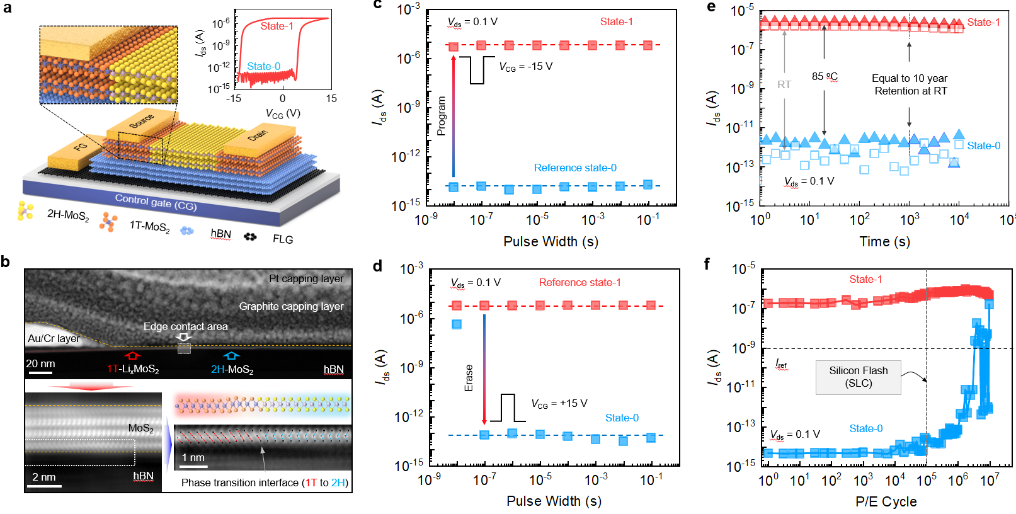We learned from Huazhong University of Science and Technology that Zhai Tianyou, a professor at the National Key Laboratory of Materials Forming and Mold Technology, and his team have made important progress in two-dimensional high-performance floating gate transistor memory and developed a new type of two-dimensional floating-gate transistor memory with edge contact characteristics. Compared with the performance of existing commercial flash memory devices, the dimensional floating gate transistor device has improved key performances such as erasing and writing speed and cycle life, providing new ideas for the development of high-performance, high-density and large-capacity storage devices.
As a kind of charge memory, the floating-gate transistor is the core component that forms the core component of the current development of large-capacity solid-state memory. However, the erasing and writing time required for current silicon-based floating-gate memory devices in commercial flash memory is in the range of about 10 microseconds to 1 millisecond, which is far lower than the nanosecond-level data processing speed of the computing unit CPU, and its cycle endurance is about Even 100,000 times is difficult to satisfy frequent data interaction. With the explosive growth of computer data throughput, it is imperative to develop a storage technology that can combine high speed and high cycle durability.
Two-dimensional materials have atomic thickness and no dangling bond surfaces, which can effectively avoid problems such as narrow channel effects and interface state pinning during device integration. They are ideal for realizing high-density integration and high-performance flash memory devices. Ideal material. However, in previous studies, the data erasing and writing speeds were often extremely slow, and few devices could achieve both high speed and high cycle endurance. Faced with this challenge, Zhai Tianyou’s team developed a new two-dimensional floating gate transistor device with edge contact characteristics. By phase-transforming molybdenum disulfide in the traditional metal-semiconductor contact area, it changes from the semiconductor phase (2H) The transition to the metal phase (1T) makes the metal-semiconductor contact type in the device transition from traditional 3D/2D surface contact to 2D/2D edge contact with atomically sharp interfaces, achieving erasing and writing speeds from 10 nanoseconds to 100 nanoseconds. High-performance memory device with nanosecond and cycle endurance exceeding 3 million times.
“By comparing traditional surface contact electrodes with new edge contacts, this study illustrates that optimizing the preparation of metal-semiconductor contact interfaces in two-dimensional floating gate memory devices can improve key properties such as erasing and writing speed and cycle life. Important role.” Zhai Tianyou said.

The picture shows the characterization and operating performance of edge contact two-dimensional floating gate memory. (Photo courtesy of the interviewed unit)
This result, entitled “High-speed and durable two-dimensional floating gate memory based on phase change edge contact”, was recently published online in the international academic journal “Nature Communications” superior.



 微信扫一扫打赏
微信扫一扫打赏
